PIETRO FIORENTINI Dixi AP Manuale del proprietario
- Tipo
- Manuale del proprietario
La pagina si sta caricando...
La pagina si sta caricando...

MANUALE TECNICO MT094 TECHNICAL MANUAL MT094
3
AVVERTENZE GENERALI
- L’apparecchiatura descritta in questo manuale è un
dispositivo soggetto a pressione inserito in sistemi
pressurizzati;
- l’apparecchiatura in questione è normalmente inseri-
ta in sistemi che trasportano gas infiammabili (ad
esempio gas naturale).
AVVERTENZE PER GLI OPERATORI
Prima di procedere all’installazione, messa in servizio o
manutenzione gli operatori devono:
- prendere visione delle disposizioni di sicurezza
applicabili all’installazione in cui devono operare;
- ottenere le necessarie autorizzazioni ad operare
quando richieste;
- dotarsi delle necessarie protezioni individuali
(casco, occhiali, ecc.);
- assicurarsi che l’area in cui si deve operare sia dota-
ta delle protezioni collettive previste e delle necessa-
rie indicazioni di sicurezza.
MOVIMENTAZIONE
La movimentazione dell’apparecchiatura e dei suoi
componenti deve essere eseguita dopo aver valutato
che i mezzi di sollevamento siano adeguati ai carichi da
sollevare (capacità di sollevamento e funzionalità). La
movimentazione dell’apparecchiatura deve essere ese-
guita utilizzando i punti di sollevamento previsti sul-
l’apparecchiatura stessa.
L’impiego di mezzi motorizzati è riservato al personale
a ciò preposto.
INSTALLAZIONE
Qualora l’installazione dell’apparecchiatura richieda
l’applicazione in campo di raccordi a compressione,
questi devono essere installati seguendo le istruzioni
del produttore dei raccordi stessi. La scelta del raccor-
do deve essere compatibile con l’impiego specificato
per l’apparecchiatura e con le specifiche di impianto
quando previste.
MESSA IN SERVIZIO
La messa in servizio deve essere eseguita da personale
adeguatamente preparato.
Durante le attività di messa in servizio il personale non
strettamente necessario deve essere allontanato e deve
essere adeguatamente segnalata l’area di interdizione
(cartelli, transenne, ecc.).
Verificare che le tarature dell’apparecchiatura siano
quelle richieste; eventualmente provvedere al loro ripri-
stino ai valori richiesti secondo le modalità indicate
oltre nel manuale.
Durante la messa in servizio devono essere valutati i
rischi determinati da eventuali scarichi in atmosfera di
gas infiammabili o nocivi.
Per installazione su reti di distribuzione per gas natura-
le occorre considerare il rischio di formazioni di misce-
la esplosiva (gas/aria) all’interno delle tubazioni.
GENERAL PRECAUTIONS
- The apparatus described in this manual is a device
subject to pressure installed in systems under pres-
sure;
- the apparatus in question is normally installed in
systems for transporting flammable gases (natural
gas, for example).
PRECAUTIONS FOR THE OPERATORS
Before proceeding with installation, commissioning or
maintenance, operators must:
- examine the safety provisions applicable to the
installation in which they must work;
- obtain the authorisations necessary for working
when so required;
- use the necessary means of individual protection
(helmet, goggles, etc.);
- ensure that the area in which they operate is fitted
with the means of collective protection envisaged
and with the necessary safety indications.
HANDLING
The handling of the apparatus and of its components
must only be carried out after ensuring that the lifting
gear is adequate for the loads to lift (lifting capacity
and functionality). The apparatus must be handled
using the lifting points provided on the apparatus itself.
Motorised means must only be used by the persons in
charge of them.
INSTALLATION
If the installation of the apparatus requires the application
of compression fittings in the field, these must be in-
stalled following the instructions of the manufacturer of
the fittings themselves. The choice of the fitting must be
compatible with the use specified for the apparatus and
with the specifications of the system when envisaged.
COMMISSIONING
Commissioning must be carried out by adequately trained
personnel.
During the commissioning activities, the personnel not
strictly necessary must be ordered away and the no-go
area must be properly signalled (signs, barriers, etc.).
Check that the settings of the apparatus are those
requested; if necessary, reset them to the required
values in accordance with the procedures indicated in
the manual.
When commissioning, the risks associated with any
discharges into the atmosphere of flammable or
noxious gases must be assessed.
In installations in natural gas distribution networks, the
risk of the formation of explosive mixtures (gas/air)
inside the piping must be considered.
AVVERTENZE PRECAUTIONS
La pagina si sta caricando...

MANUALE TECNICO MT094
Scopo di questo manuale è di fornire informazioni
essenziali per l'installazione, la messa in servizio, lo
smontaggio, il rimontaggio e la manutenzione dei rego-
latori DIXI AP.
Si ritiene inoltre opportuno fornire in questa sede una
breve illustrazione delle caratteristiche principali del
regolatore e dei suoi accessori.
1.1 PRINCIPALI CARATTERISTICHE
Il regolatore di pressione DIXI AP è un regolatore per
media e alta pressione.
Il DIXI AP è un regolatore normalmente chiuso e con-
seguentemente chiude in caso di:
- rottura della membrana principale;
- rottura della membrana del pilota;
- mancanza di alimentazione del circuito pilota.
Le caratteristiche principali di questo regolatore sono:
• Pressione di progetto: fino 85 bar;
• Temperatura operativa: -10 °C ÷ + 50 °C (a richiesta
temperature superiori o inferiori);
• Temperatura ambiente: -20 °C ÷ + 60 °C;
• Campo della pressione di entrata bpe: 1,5 ÷ 85 bar
• Campo di regolazione possibile Wh: 0,5 ÷ 25 bar;
• Pressione differenziale minima 1 bar;
• Classe di precisione RG: fino a 5;
• Classe di pressione di chiusura SG: fino a 5.
1.2 FUNZIONAMENTO (FIG. 1)
In assenza di pressione l'otturatore 3 è mantenuto in
posizione di chiusura dalla molla 43, e poggia sulla
sede valvola 2. La pressione di monte, anche se varia-
bile, non modifica questa posizione, in quanto l'ottura-
tore, per la presenza del foro A, si viene a trovare tra
due pressioni uguali agenti su uguali superfici. Anche lo
stelo 9 si trova tra due pressioni uguali, poiché la pres-
sione di monte, attraverso il foro A, viene portata anche
nella camera C.
L'otturatore è comandato dalla membrana 15, sulla
quale agiscono le seguenti forze:
• verso il basso: il carico della molla 43, la spinta deri-
vante dalla pressione regolata Pa nella camera D e il
peso dell'equipaggio mobile;
• verso l'alto: la spinta derivante dalla pressione di moto-
rizzazione Pm nella camera E, alimentata dal pilota.
La pressione di motorizzazione è ottenuta prelevando das
dal regolatore alla pressione di monte.
The scope of this manual is to provide essential in-
formation for the, commissioning, disassembly, re-
assembly and maintenance of the DIXI AP regulator.
At the same time we consider it appropriate to provide
a brief illustration of the main features of the regulator
and its accessories.
1.1 MAIN SPECIFICATIONS
The DIXI AP pressure regulator is a regulator for
medium and high pressures.
The DIXI AP regulator is normally closed and, as a
result, closes in the event of:
- rupture of the main diaphragm;
- rupture of the pilot diaphragm;
- no feed in the pilot circuit.
The main specifications of this regulator are:
• Design pressure: up to 85 bar;
• Working temperature range: -10 °C ÷ +50 °C (higher
or lower temperatures on request);
• Ambient temperature: -20 °C ÷ + 60 °C;
• Inlet pressure range bpe: 1.5 ÷ 85 bar
• Regulating range possible Wh: 1.5 ÷ 25 bar;
• Minimum differential pressure: 1 bar;
• Precision class RG: up to 5;
• Closing pressure class SG: up to 5.
1.2 OPERATION (FIG. 1)
If there is no pressure, the obturator 3 is maintained in
the closed position by the spring 43 and rests on the
valve seat 2. The upstream pressure, even if variable,
does not modify this position as the obturator, because
of the hole A, finds itself between two equal pressures
acting on equal surface areas. The rod 9 is also between
two equal pressures as the upstream pressure is also
brought to the chamber C throught the hole A.
The obturator is controlled by the diaphragm 15 on
which the following forces are exerted:
• downwards: the load of the spring 43, the thrust
deriving from the regulated pressure Pa in the cham-
ber D and the weight of the mobile assembly;
• upwards: the thrust deriving from the motorisation
pressure Pm in the chamber E, supplied by the pilot.
The motorization pressure is obtained by taking gas
from the regulator at the upstream pressure.
TECHNICAL MANUAL MT094
5
1.0 INTRODUZIONE 1.0 INTRODUCTION

MANUALE TECNICO MT094 TECHNICAL MANUAL MT094
6
La pressione di motorizzazione è ottenuta prelevando
gas dal regolatore alla pressione di monte. Il gas viene
filtrato attraverso il filtro 13 e subisce una prima decom-
pressione nel preriduttore R14/A (fig. 2) composto
essenzialmente da un otturatore 5, da una molla 12 e da
una membrana 10 fino ad un valore Pep che dipende
dalla pressione di taratura del regolatore. Dalla camera
G la pressione Pep passa quindi nel pilota 204/A che
regola tramite l'otturatore 17 fino al valore Pm di immis-
sione nella testata del regolatore. La regolazione di Pm
si ottiene dal confronto tra la forza esercitata dalla molla
di taratura 22 del pilota e l'azione della pressione rego-
lata Pa agente nella camera B sulla membrana 16.
La modifica della taratura viene effettuata ruotando la
vite di regolazione 10; una rotazione in senso orario
provoca un aumento della Pm e quindi della pressione
regolata Pa; viceversa per una rotazione in senso antio-
rario. Se per esempio, durante il funzionamento c'è una
diminuzione di pressione di valle Pa (a causa dell'au-
mento della portata richiesta o della diminuzione della
pressione di monte) si ha uno squilibrio nell'equipaggio
mobile 15 del pilota, che si sposta provocando un
aumento dell'apertura dell'otturatore 17. Aumenta di
conseguenza anche il valore della pressione di motoriz-
zazione Pm, che agendo nella camera E al di sotto della
membrana 15 (fig. 1) determina uno spostamento
verso l'alto dell'otturatore 3 e quindi l'aumento dell'a-
pertura del regolatore fino a ripristinare il valore presta-
bilito della pressione regolata.
Fig. 1
The motorisation pressure is obtained by drawing gas
from gas the regulator at the upstream pressure. The
gas is filtered through the filter 13 and is subjected to
initial decompression in the preregulator R14/A (fig. 2)
composed essentially of an obturator 5, a spring 12
and a diaphragm 10 to a value, Pep, which depends on
the pressure set-point of the regulator. The pressure,
Pep, then passes from the chamber G through the hole
F in the 204/A pilot which adjusts it by means of the
obturator 17 until the inlet value, Pm, in the head of the
regulator. The regulation of Pm is obtained by the com-
parison of the force exerted by the setting spring 22 of
the pilot and the action of the regulated pressure, Pa,
acting in the chamber B on the diaphragm 16.
The set-point can be changed by turning the adjust-
ment screw 10; clockwise rotation increases Pm and
therefore the regulated pressure, Pa; the opposite
occurs when the ring is turned anticlockwise. If, for
example, the downstream pressure, Pa, drops during
operation (because of an increase in the requested flow
rate or a drop in the upstream pressure) an imbalance
occurs in the mobile assembly 15 of the pilot, which is
displaced to increase the opening of the obturator 17.
As a result, the motorisation pressure value, Pm,
increases and, by acting in the chamber E under the
diaphragm 15 (fig. 1), causes the obturator 3 to move
upwards and therefore an increase in the opening of the
regulator until the set-point of the regulated pressure is
restored.
Collegamenti a cura del cliente
Connections to be made by
the customer
N° di riferimento per i collegamenti
Ref. No. for the connections
1
3
13

MANUALE TECNICO MT094 TECHNICAL MANUAL MT094
7
Viceversa, quando la pressione regolata inizia ad
aumentare, la forza che essa esercita sulla membrana
16 del pilota sposta l'equipaggio mobile 15 portando
l'otturatore 17 verso la posizione di chiusura. La pres-
sione Pm quindi diminuisce a causa del travaso tra le
camere E e D attraverso l'orifizio 30, e la forza esercita-
ta dalla molla 43 provoca lo spostamento dell'otturato-
re 3 verso il basso, facendo così ritornare la pressione
regolata al valore prestabilito. In condizioni di normale
esercizio l'otturatore 17 del pilota si posiziona in modo
che il valore della pressione di motorizzazione Pm sia
tale da mantenere il valore della pressione di valle Pa
attorno al valore prescelto.
Vice versa, when the regulated pressure begins to
increase, the force it exerts on the diaphragm 16 of the
pilot moves the mobile assembly 15 displacing the
obturator 17, towards the closed position. The pressu-
re, Pm, then drops because of the transfer between the
chambers E and D through the orifice 30, and the force
exerted by the spring 43 causes the downward dis-
placement of the obturator 3, to restore the regulated
pressure to the set-point. In normal working condi-
tions, the obturator 17 of the pilot positions itself so
that the motorisation pressure value, Pm, is such as to
maintain the downstream pressure value, Pa, around
the set-point.
Fig. 2

MANUALE TECNICO MT094 TECHNICAL MANUAL MT094
8
Tab. 1 Pilota 204/A Tab. 1 Pilot 204/A
Codice Colore De Lo d i it Campo di taratura in bar
Code Colour Setting range in bar
1 2701260 BIANCO/WHITE 3.5 7.5 7.5 0.3 ÷ 1.2
2 2701530 GIALLO/YELLOW 4 7 7 0.7 ÷2.8
3 2702070 ARANCIO/ORANGE 5 7 7 1.5 ÷ 7
4 2702450 ROSSO/RED 35 60 6774
÷14
5 2702815 VERDE/GREEN 7778
÷20
6 2703220 NERO/BLACK 86615÷25
1.3 Molle di taratura 1.3 Setting springs
Il regolatore DIXI AP utilizza il pilota 204/A. I campi di
regolazione del pilota sono riportati nelle tabelle
seguenti.
The DIXI AP regulator uses the 204/A pilot. The regula-
tion range of the pilot is given in the tables below.
De = Ø esterno d = Ø filo i = n. spire utili Lo = Lunghezza molla it = n. spire totali
De = external diameter d = wire diameter i = active coils Lo = Spring length it = total coils

MANUALE TECNICO MT094 TECHNICAL MANUAL MT094
9
Fig. 3 (Regolatore standard)
2.1 GENERAL
Before installing the regulator you must ensure that:
a) the regulator can be inserted into the space pro-
vided and that it is sufficiently accessible for sub-
sequent maintenance operations;
b) the piping upstream and downstream are at the
same level and able to support the weight of the
regulator;
c) the inlet/outlet flanges on the piping are parallel;
d) the inlet/outlet flanges on the regulator are clean
and the regulator itself has not been damaged
during transport;
e) the piping upstream has been cleaned with the
removal of residual impurities such as welding slag,
sand, paint residues, water, etc.
The normally recommended set-ups are:
2.0 INSTALLATION
2.1 GENERALITÀ
Prima di installare il regolatore è necessario assicurarsi che:
a) il regolatore sia inseribile nello spazio previsto e sia
sufficientemente agibile per le successive operazio-
ni di manutenzione;
b) le tubazioni di monte e di valle siano al medesimo
livello e in grado di sopportare il peso del regolatore;
c) le flange di entrata/uscita della tubazione siano
parallele;
d) le flange di entrata/uscita del regolatore siano pulite
e il regolatore stesso non abbia subito danni duran-
te il trasporto;
e) la tubazione a monte sia stata pulita eliminando le
impurità residue quali scorie di saldatura, sabbia,
residui di vernice, acqua, ecc.
La disposizione normalmente prescritta è:
2.0 INSTALLAZIONE
Fig. 3 (Standard Regulator)

MANUALE TECNICO MT094 TECHNICAL MANUAL MT094
10
Regolatore
Regulator
Collegamento a valle
Downstream connection
Manometro di controllo
Control pressure gauge
Rubinetto di sfiato
Bleed cock
Valvola di intercettazione
On/Off valve
TAB. 2 COLLEGAMENTO APPARECCHIATURE
INSTALLAZIONE IN LINEA
TAB. 2 CONNECTING THE APPARATUSES
IN-LINE INSTALLATION
INSTALLAZIONE A SQUADRA INSTALLATION AT RIGHT ANGLES
Regolatore
Regulator
Collegamento a valle
Downstream connection
Presa d’impulso
Sensing line
Manometro di
controllo
Control pressure
gauge
Rubinetto di sfiato
Bleed cock
Valvola di intercettazione
On/Off valve
Presa d’impulso
Sensing line

MANUALE TECNICO MT094 TECHNICAL MANUAL MT094
11
Il regolatore va installato sulla linea orientando la frec-
cia sul corpo nel senso del flusso del gas.
Per ottenere una buona regolazione è indispensabile che
la posizione delle prese di pressione di valle e la velocità
del gas nel punto di presa rispettino i valori indicati nelle
tabelle 2 e 3 (posizionamento) e 4 (velocità).
Allo scopo di evitare il raccogliersi di impurità e con-
dense nei tubi delle prese di pressione si consiglia:
a) che i tubi stessi siano sempre in discesa verso l’at-
tacco della tubazione di valle con una pendenza
all’incirca del 5-10%;
b) che gli attacchi della tubazione siano sempre salda-
ti sulla parte superiore della tubazione stessa e che
il foro sulla tubazione non presenti bave o sporgen-
ze verso l’interno.
NB. SI RACCOMANDA DI NON INTERPORRE
VALVOLE DI INTERCETTAZIONE SULLE PRESE DI
IMPULSO.
TAB. 4
Nella tubazione a valle del regolatore la velocità
del gas non deve superare i seguenti valori:
Vmax= 30 m/s per Pa > 5 bar
Vmax= 25 m/s per 0,5 < Pa < 5 bar
The regulator must be installed in the line with the
arrow on the body pointing in the gas flow direction.
For good regulation it is indispensable that the position
of the downstream pressure take-offs and the speed of
the gas at the take-off point respect the values given in
tables 2 and 3 (positioning) and 4 (speed).
The following are recommended so as to prevent the
accumulation of impurities and condensate in the lines
of the pressure take-offs:
a) the lines themselves must slope down towards the
downstream piping with a slope of about 5-10%;
b) the connectors on the piping must always be welded
on the top of the piping itself and there must be no
burr or inward protrusions in the hole in the piping.
NB. WE RECOMMEND NOT TO PUT ON/OFF VALVES
ON THE IMPULSE TAKE-OFFS.
TAB. 4
The speed of the gas must not exceed the following
values in the piping downstream from the regulator:
Vmax= 30 m/s for Pa > 5 bar
Vmax= 25 m/s for 0,5 < Pa < 5 bar
TAB. 3 PARTICOLARE PRESA MULTIPLA CON
I NUMERI DI RIFERIMENTO PRESE DI
IMPULSO
TAB. 3 DETAIL OF THE MULTIPLE TAKE-OFF
WITH SENSING LINE REFERENCE
NUMBERS
1 e 2Collegare alle teste dei regolatori
3 e4Collegare ai piloti
5 e6Collegare all’acceleratore e al blocco
1 and 2Connect to regulators heads
3 and 4Connect to pilots
5 and 6Connect to accelerator and slam-shut

MANUALE TECNICO MT094 TECHNICAL MANUAL MT094
12
3.0 ACCESSORI 3.0 ACCESSORIES
3.1 VALVOLA DI SFIORO
La valvola di sfioro è un dispositivo di sicurezza che
provvede a scaricare all’esterno una certa quantità di
gas quando la pressione nel punto di controllo supera
quella di taratura a causa di eventi non duraturi, quali
per esempio, la chiusura di valvole di intercettazione in
un tempo molto ridotto e/o un surriscaldamento del gas
con portata richiesta nulla. Lo scarico del gas all’ester-
no può, per esempio ritardare o evitare l’intervento del
dispositivo di blocco per cause transitorie derivanti da
danni al regolatore.
Ovviamente la quantità di gas scaricata dipende dall’en-
tità della sovrapressione rispetto alla taratura. I diversi
modelli di valvole di sfioro disponibili si basano tutti
sullo stesso principio di funzionamento, che viene in
seguito illustrato facendo riferimento alla valvola
VS/AM 56 (fig. 4).
Esso si fonda sul confronto tra la spinta sulla membrana
24 derivante dalla pressione del gas da controllare e la
spinta derivante dalla molla di taratura 18. In questo con-
fronto intervengono il peso dell’equipaggio mobile, le
spinte statiche e quelle dinamiche residue sull’otturatore 4.
Quando la spinta derivante dalla pressione del gas supe-
ra quella della molla di taratura, l’otturatore 4 viene solle-
vato con conseguente scarico di una certa quantità di gas.
Non appena la pressione scende al di sotto del valore di tara-
tura, l’otturatore ritorna in posizione di chiusura. Il controllo
e la registrazione dell’intervento della valvola di sfioro può
essere eseguito seguendo le procedure di seguito indicate.
3.1 RELIEF VALVE
The relief valve is a safety device which releases a cer-
tain quantity of gas to the exterior when the pressure at
the control point exceeds the set-point as a result of
short-lasting events such as, for example, the very fast
closing of the on/off valves and/or overheating of the
gas with zero flow rate demand. The release of the gas
to the exterior can, for example, delay or block inter-
vention of the slam-shut valve for transitory reasons
deriving from damage to the regulator.
Obviously the quantity of gas released depends on the
extent of the overpressure with respect to the set-point.
The different models of relief valve available are all
based on the same operating principle which is illustra-
ted below with reference to the valve VS/AM 56 (fig. 4).
It is based on the contrast between the thrust on the
diaphragm 24 deriving from the pressure of the gas to
control and the thrust from the setting spring 18. The
weight of the mobile assembly, the static thrust and the
residual dynamic thrust on the obturator 4 also contri-
bute to this contrast.
When the thrust deriving from the pressure of the gas
exceeds that of the setting spring, the obturator 4 is
raised and a certain quantity of gas is released as a
result.
As soon as the pressure drops below the set-point, the
obturator returns to the closed position. Proceed as
indicated below to control and adjust intervention of
the relief valve.
Fig. 4

MANUALE TECNICO MT094
3.1.1 INSTALLAZIONE DIRETTA SULLA LINEA
(Fig. 5)
Quando la valvola di sfioro è montata direttamente sulla
linea, senza cioè l’interposizione di una valvola di inter-
cettazione, si consiglia di procedere come indicato di
seguito:
1)assicurarsi che la valvola di intercettazione di valle
V2 e il rubinetto di sfiato 6 siano chiusi;
2)aumentare la pressione nel tronco di valle fino al
valore previsto di intervento collegando al rubinetto
6 una pressione ausiliaria controllata e stabilizzarla al
valore desiderato;
3)verificare l’intervento della valvola di sfioro ed even-
tualmente registrarlo ruotando opportunamente il
tappo di regolazione 13 (in senso orario per aumen-
tare la taratura, e viceversa per diminuirla).
3.1.1 DIRECT INSTALLATION ON THE LINE
(Fig. 5)
When the relief valve is fitted directly in the line without,
that is, the interposition of an on/off valve, we recom-
mend proceeding as follows:
1) ensure that the downstream on/off valve V2 and the
bleed cock 6 are closed;
2) increase the pressure in the downstream section to
the value at which intervention should occur by con-
necting a controlled auxiliary pressure to the cock 6
and stabilise it at the desired value;
3) check intervention of the relief valve and adjust it if
necessary by turning the adjustment plug 13 appro-
priately (clockwise to increase the set-point, anti-
clockwise to reduce it).
TECHNICAL MANUAL MT094
13
3.1.2 INSTALLAZIONE CON VALVOLA DI
INTERCETTAZIONE (Fig. 6)
1)chiudere la valvola di intercettazione 16;
2)collegare alla presa 17 una pressione ausiliaria con-
trollata e aumentarla lentamente fino al valore previ-
sto di intervento;
3)verificare l’intervento della valvola di sfioro ed even-
tualmente registrarlo ruotando opportunamente il
tappo di regolazione 13 (in senso orario per aumen-
tare la taratura, e viceversa per diminuirla).
3.1.2 INSTALLATION WITH ON/OFF VALVE
(Fig. 6)
1) close the on/off valve 16;
2)connect a controlled auxiliary pressure to the take-
off 17 and increase it slowly to the envisaged inter-
vention value;
3)check the intervention of the relief valve and adjust it
if necessary by turning the adjustment plug 13 app-
ropriately (clockwise to increase the set-point, anti-
clockwise to reduce it).
Fig. 5 Fig. 6

MANUALE TECNICO MT094
La concezione di tipo modulare del regolatore DIXI AP
assicura la possibilità di applicare la valvola di blocco
incorporata allo stesso corpo anche in tempi successi-
vi all’installazione del regolatore.
4.1 VALVOLA DI BLOCCO INCORPORATA
SB 87
E’ un dispositivo (fig. 7) che blocca immediatamente il
flusso del gas se, a causa di qualche guasto, la pres-
sione di valle raggiunge il valore prefissato per il suo
intervento.
Le principali caratteristiche di tale dispositivo di blocco
sono:
• pressione di progetto: 18,9 bar per tutti i
componenti;
• intervento per incremento e/o diminuzio-
ne della pressione;
• precisione (AG): ± 5% sul valore della
pressione di taratura per aumenti di
pressione, ± 15% per diminuzioni di
pressione;
• by-pass incorporato per ottenere l’equili-
brio delle pressioni ed agevolare il riar-
mo del dispositivo.
The modular-type conception of DIXI AP regulator
means that it is also possible to fit the slam-shut incor-
porated with the body itself even after the installation of
the regulator.
4.1 INCORPORATED SLAM-SHUT SB 87
This is a device (fig. 7) which immediately blocks the
gas flow if, following some kind of failure, the down-
stream pressure reaches the set-point for its interven-
tion or if it is operated manually.
The main characteristics of the slam-shut device are:
• design pressure: 18.9 bar for all the
components;
• intervention with pressure increase
and/or decrease;
• precision (AG): ± 5% of the pressure
set-point for pressure increases,
± 15% for pressure decreases;
• incorporated by-pass for balancing
the pressures and facilitating resetting
of the device.
TECHNICAL MANUAL MT094
14
4.0 MODULARITÀ 4.0 MODULARITY
Fig. 7

MANUALE TECNICO MT094
La valvola di blocco SB 87 è costituita essenzialmente
da un otturatore 7 montato su uno stelo 5, da un leve-
rismo di sgancio 23, da una testata di comando C, e da
un sistema di riarmo manuale .
Nella camera C della testata di comando la pressione da
controllare Pa agisce sulla membrana 4, che è solidale
con l’alberino fornito di camme.
Il carico della pressione Pa sulla membrana è contra-
stato dalle molle 35 e 36, che determinano, rispettiva-
mente, l’intervento per aumento o diminuzione di
pressione.
La taratura del dispositivo viene effettuata agendo sulle
ghiere 29 e 30. Una rotazione in senso orario delle ghie-
re provoca un aumento del valore di intervento; vicever-
sa per una rotazione in senso antiorario.
In caso di intervento per aumento di pressione, quando
la Pa supera il valore di taratura il carico sulla membra-
na 4 aumenta fino a vincere la resistenza della molla 35.
Questo provoca la traslazione verso il basso dell’alberi-
no 24, che per mezzo della camma sposta il tastatore
sganciando il leverismo 23. In questo modo si libera lo
stelo 5 con l’otturatore 7 che viene portato in chiusura
dalla molla 38.
L’intervento per diminuzione di pressione avviene invece
nel seguente modo. Fintantoché il valore di Pa rimane al
di sopra del carico di taratura della molla 36 il supporto
molla 26 rimane in appoggio sul supporto 27.
Se la pressione Pa diminuisce al di sotto del valore pre-
fissato, la molla 36 fa traslare verso l’alto il supporto 26
e di conseguenza l’alberino 24.
La camma sposta quindi il tastatore provocando lo
sgancio del leverismo 23. Il riarmo del blocco si esegue
svitando la bussola filettata 6 e tirandola verso il basso
fino a riagganciare il leverismo 23.
Nella prima fase della manovra, sarà necessario atten-
dere che la pressione di monte, attraverso il by-pass
interno, passi a valle dell’otturatore equilibrandolo.
Dopo il riarmo la bussola 6 dovrà essere riavvitata nella
sua sede. La condizione di apertura o chiusura della val-
vola di blocco è individuabile dall’esterno osservando la
posizione del dado 50 attraverso la feritoia della
bussola 6.
Il collegamento tra la testata di comando C e il punto di
controllo della Pa può avvenire con l’interposizione di un
dispositivo (Push) fig. 12 che consente un facile con-
trollo della funzionalità del dispositivo pressostatico.
The SB 87 slam-shut consists essentially of an obtura-
tor 7 fitted on a rod 5, a release lever assembly 23, a
control head C and a manual resetting system.
In the chamber C of the control head, the pressure to
control Pa acts on the diaphragm 4 which is integral
with the shaft with cams.
The load of the pressure Pa on the diaphragm is con-
trasted by the springs 35 and 36, which respectively
determine intervention for a pressure increase or
decrease.
The device is set by adjusting the rings 29 and 30. The
intervention value is increased by turning the rings
clockwise and vice versa when turned anticlockwise.
In the case of intervention for pressure increase, when
the Pa exceeds the set-point, the load on the diaphragm
4 increases until it overcomes the resistance of the
spring 35.
This provokes the downward displacement of the shaft
24 which shifts the feeler and releases the lever mecha-
nism 23 by means of the cam. In this way, the rod 5 is
released with the obturator 7 which is closed by the
spring 38.
Intervention for a pressure decrease takes place as fol-
lows. As long as the value of Pa stays above the set
load of the spring 36, the spring support 26 rests on
support 27.
If the pressure Pa drops below the set-point, the spring
36 displaces the support 26 upwards and the shaft 24
as a result.
The cam then shifts the feeler and causes the release of
the lever mechanism 23. The slam-shut is re-armed by
unscrewing the threaded bushing 6 and pulling it
downwards until the lever mechanism 23 is rearmed.
During the first stage of this operation, you must wait
until the pressure upstream from the obturator passes
downstream through the internal by-pass and
rebalances it.
After re-arming, you must screw the bushing 6 back in
its seat. It is possible to see from outside if the slam-
shut is open or closed by observing the position of the
nut 50 through the slot in the bushing 6.
The connection between the control head C and Pa
control point can be made with the interposition of a
device (Push) fig. 12 which makes it easy to control the
operation of the pressure control device.
TECHNICAL MANUAL MT094
15
La pagina si sta caricando...

9 2700513 ROSSO/RED 2 8.50 10.50 0.07 ÷ 0.19
10 2700713 VERDE/GREEN 2.3 8.50 10.50 0.17 ÷ 0.03
11 2700750 NERO/BLACK 2.5 6.50 8.25 0.27 ÷ 0.7
12 2700985 GIALLO/YELLOW 15 40 3 6 8 0.68 ÷ 1
13 2700513 ROSSO/RED 2 8.50 10.50 0.4 ÷ 1
14 2700713 VERDE/GREEN 2.3 8.50 10.50 1 ÷ 1.9
15 2700750 NERO/BLACK 2.5 6.50 8.25 1.8 ÷ 2.8
16 2700985 GIALLO/YELLOW 3 6 8 2.7 ÷ 5
MANUALE TECNICO MT094 TECHNICAL MANUAL MT094
17
4.2 TAB. 5 MOLLE DI TARATURA BLOCCO 4.2 TAB. 5 SLAM-SHUT SETTING SPRINGS
De = Ø esterno d = Ø filo i= n. spire utili Lo = Lunghezza molla it = n. spire totali
De = Ø external diameter d = Ø wire diameter i= active coils Lo = spring length it = total coils
1 2701040 BIANCO/ARANCIO 3 5.5 7.5 0.15 ÷ 0.26
WHITE/ORANGE
2 2701260 BIANCO/GIALLO 35 60 3.5 5.5 7.5 0.25 ÷ 0.54
3 2701530 WHITE/YELLOW 4 5 7 0.53 ÷ 0.95
4 2701790 GIALLO/NERO 4.5 4.5 6.5 0.92 ÷ 1.5
YELLOW/BLACK
5 2701142 BIANCO/GIALLO 3.25 5.5 8 1 ÷ 1.4
WHITE/YELLOW
6 2701260 BIANCO/WHITE 35 60 3.5 5.5 7.5 1.3 ÷ 2.1
7 2701530 GIALLO/YELLOW 4 5 7 2 ÷ 3.7
8 2701790 GIALLO/NERO 4.5 4.5 6.5 3.8 ÷ 6.8
YELLOW/BLACK
CAMPO DI TARATURA in bar
SETTING RANGE in bar
Caratteristiche molla/Springs characteristics SB 87/102 SB 87/103
Codice Colore De Lo d i it max min max min
Code Colour
1 2701790 GIALLO/NERO 4.5 4.5 6.5 10 ÷ 17
YELLOW/BLACK
2 2702070 ARANCIO/BIANCO 35 60 5 5 7 14 ÷ 19
3 2702280 BIANCO/ROSSO 4.5 4.5 6.5 17.2 ÷ 31.5
WHITE/RED Intervento per minima pressione
For decreasing pressure
4 2700750 NERO/BLACK 15 40 2.5 6 1/2 8 1/4 4.5 ÷ 6.8
5 2700985 GIALLO /YELLOW 3 6 8 6.8 ÷ 20.5
CAMPO DI TARATURA in bar
SETTING RANGE in bar
Caratteristiche molla/Springs characteristics SB 87/104
Codice Colore De Lo d i it Intervento per massima pressione
Code Colour For increasing pressure

MANUALE TECNICO MT094
4.3 MONITOR
Il monitor è un regolatore di emergenza che entra in
funzione in sostituzione del regolatore di servizio se per
qualche ragione quest’ultimo consente alla pressione di
valle di aumentare fino a raggiungere il valore prefissa-
to per il suo intervento.
Sul regolatore Dixi AP è disponibile la soluzione moni-
tor in linea (fig. 10). In questa configurazione, il regola-
tore monitor è in tutto e per tutto identico ad un rego-
latore standard, mentre il regolatore di servizio presen-
ta una variante costruttiva che è illustrata in fig. 9.
Questa variante si rende necessaria perchè la pressione
che alimenta il pilota del regolatore di servizio viene
prelevata a monte del monitor dalla sua flangia inter-
media, e viene portata con un collegamento esterno
fino alla flangia intermedia del regolatore di servizio.
Questa pressione deve quindi essere isolata da quella
che, attraverso il foro sullo stelo, arriva dalla zona a
monte del regolatore di servizio stesso.
4.3 MONITOR
This monitor is an emergency regulator which comes
into operation to replace the service regulator if, for any
reason, the latter permits the downstream pressure to
rise up to the value set for its intervention.
The in-line monitor solution is available on the Dixi AP
regulator (fig. 10). In this configuration, the monitor
regulator is identical in every way to a standard regula-
tor while there is a constructive variant in the service
regulator, as illustrated in fig. 9.
This variant is necessary because the pressure which
feeds the service regulator pilot is taken off upstream
from the monitor its intermediate flange, and then brou-
ght by an external connection to the intermediate flan-
ge of the service regulator. This pressure must therefo-
re be isolated from the pressure which arrives from the
zone upstream from the service regulator itself though
the hole in the rod.
TECHNICAL MANUAL MT094
18
Fig. 9
Variante regolatore di servizio nell’applicazione con monitor.
Variant to service regulator in applications with monitor.

MANUALE TECNICO MT094
Il monitor è un regolatore di emergenza che ha il com-
pito di entrare in servizio al posto del regolatore princi-
pale qualora questo, per una sua anomalia, consenta
alla pressione di valle di raggiungere il valore di taratu-
ra fissato per l’intervento del monitor.
Per tale dispositivo di emergenza la PIETRO FIORENTI-
NI dispone di una soluzione per installazioni con moni-
tor in linea (fig. 10).
4.4.1 CARATTERISTICHE
• Ingombro ridotto;
• Semplicità di manutenzione.
The monitor is an emergency regulator whose function
is to come into service instead of the main regulator
when failure of the latter allows the downstream pres-
sure to reach the point set for monitor intervention.
PIETRO FIORENTINI has a solution for this emergency
device for installations with in-line monitor (fig. 10).
4.4.1 CHARACTERISTICS
• Reduced dimensions;
• Easy maintenance.
TECHNICAL MANUAL MT094
19
4.4 DIXI AP CON FUNZIONAMENTO DA
MONITOR 4.4 DIXI AP FUNCTIONING AS MONITOR
Fig. 10

MANUALE TECNICO MT094
5.1 GENERALITÀ
Dopo l’installazione verificare che le valvole di intercet-
tazione di entrata/uscita, l’eventuale by-pass e il rubi-
netto di sfiato siano chiusi.
Si raccomanda di verificare, prima della messa in servi-
zio, che le condizioni di impiego siano conformi alle
caratteristiche delle apparecchiature.
Tali caratteristiche siano richiamate con i simboli sulle
targhette di cui ogni apparecchiatura è munita.
Si raccomanda di azionare le valvole di apertura e chiu-
sura molto lentamente. Manovre troppe rapide potreb-
bero danneggiare il regolatore.
5.0 MESSA IN SERVIZIO 5.0 START UP
TECHNICAL MANUAL MT094
20
TARGHETTE APPARECCHIATURE APPARATUS SPECIFICATION PLATES
5.1 GENERAL
After installation, check that the inlet/outlet on/off val-
ves, any by-pass and the bleed cock are closed.
Before commissioning, you must ensure that the con-
ditions of use comply with the characteristics of the
apparatuses.
These characteristics are recalled by the symbols on
the specification plates applied to each apparatus.
We recommend actuating the opening and closing val-
ves very slowly. The regulator could be damaged by
operations which are too fast.

MANUALE TECNICO MT094
Di seguito è riportato l’elenco dei simboli usati e il loro
significato:
Pemax= massima pressione di funzionamento
all’entrata dell’apparecchio
bpe= campo di variabilità della pressione di entrata del
regolatore di pressione in condizioni di normale funzio-
namento
Pzul= massima pressione che può essere sopportata in
condizioni di sicurezza dalla struttura del corpo dell’appa-
recchio
Wa= campo di taratura del regolatore di pressione/
pilota/preriduttore che può essere ottenuto usando i
particolari e la molla di taratura montati al momento del
collaudo (non cambiando cioè alcun componente del-
l’apparecchio). Nei regolatori pilotati il pilota viene con-
siderato come apparecchiatura separata con proprio
campo di taratura Wa
Wh= campo di taratura del regolatore di pressione/pilo-
ta/preriduttore che può essere ottenuto usando le molle
di taratura indicate nelle apposite tabelle ed eventual-
mente cambiando qualche altro particolare dell’appa-
recchio (pastiglia armata, membrane, ecc.). Nei regola-
tori pilotati il pilota viene considerato come apparec-
chiatura separata con proprio campo di taratura Wh
QmxPemin= portata massima con la pressione minima
all’entrata del regolatore di pressione
QmxPemax= portata massima con la pressione massi-
ma all’ingresso del regolatore di pressione
Cg= coefficiente sperimentale di portata critica
RG= classe di regolazione
SG= classe di pressione di chiusura
AG= precisione di intervento
Wao= campo di intervento per sovrapressione di valvo-
le di blocco, sfioro e di sicurezza e acceleratori che può
essere ottenuto usando la molla di taratura montata al
momento del collaudo. Nelle valvole di sicurezza pilota-
te il pilota viene considerato come apparecchiatura
separata con proprio campo di taratura Wao
Who= campo di intervento per sovrapressione di valvo-
le di blocco, sfioro e di sicurezza e acceleratori che può
essere ottenuto usando le molle di taratura indicate
nelle tabelle. Nelle valvole di sicurezza pilotata il pilota
viene considerato come apparecchiatura separata con
proprio campo di taratura Who
Wau= campo di intervento per diminuzione di pressio-
ne di valvole di blocco che può essere ottenuto usando
la molla di taratura montata al momento del collaudo
Whu= campo di intervento per diminuzione di pressio-
ne di valvole di blocco che può essere ottenuto usando
le molle di taratura indicate nelle tabelle.
The list of symbols used and their meanings are listed
below:
Pemax= maximum inlet operating pressure of the
apparatus
bpe= range of variability of the inlet pressure of the
pressure regulator in normal operating conditions
Pzul= maximum pressure which can be supported by
the structure of the body of the apparatus in safety con-
ditions
Wa= range of setting of the pressure regulator/
pilot/pre-regulator which can be obtained using the
parts and the setting spring fitted at the moment of
testing (without changing any components of the appa-
ratus, that is). In the piloted regulators, the pilot is con-
sidered as a separate apparatus with its own setting
range Wa
Wh= range of setting of the pressure regulator/pilot/
pre-regulator which can be obtained using the setting
springs indicated in the associated tables and also by
changing some other part of the apparatus (reinforced
gasket, diaphragm etc.). In the piloted regulators, the
pilot is considered as a separate apparatus with its own
setting range Wh
QmxPemin= maximum flow rate with minimum pres-
sure at the pressure regulator inlet
QmxPemx= maximum flow rate with maximum pres-
sure at the pressure regulator inlet
Cg= experimental coefficient of critical flow
RG= regulation class
SG= closing pressure class
AG= precision of action
Wao= range of operation for the over pressure of slam-
shut, relief and safety valves and accelerators which
can be obtained using the setting spring fitted at the
moment of testing. In the piloted regulators, the pilot is
considered as a separate apparatus with its own setting
range Wao
Who= range of operation for the over pressure of slam-
shut, relief and safety valves and accelerators which
can be obtained using the setting springs indicated in
the tables. In the piloted regulators, the pilot is consi-
dered as a separate apparatus with its own setting
range Who
Wau= range of operation for the reduction of slam-shut
pressure which can be obtained using the setting
spring fitted at the moment of testing
Whu= range of operation for the reduction of slam-shut
pressure which an be obtained using the setting
springs indicated in the tables.
TECHNICAL MANUAL MT094
21

MANUALE TECNICO MT094
5.2 MESSA IN GAS, CONTROLLO TENUTA
ESTERNA E TARATURE
La tenuta esterna è garantita quando, cospargendo l’e-
lemento in pressione con un mezzo schiumogeno, non
si formano rigonfiamenti di bolle.
Il regolatore e le altre eventuali apparecchiature (valvo-
le di blocco, monitor) vengono normalmente forniti già
tarati al valore richiesto. E’ peraltro possibile che per
vari motivi (es. vibrazioni durante il trasporto), le tara-
ture possano subire modifiche, restando in ogni caso
comprese entro i valori consentiti dalle molle utilizzate.
Si consiglia quindi di verificare le tarature secondo le
procedure di seguito illustrate.
Nelle tabelle 6 e 7 sono riportati i valori consigliati di
taratura delle apparecchiature previste nelle diverse
filosofie impiantistiche. I dati di queste tabelle possono
risultare utili sia in fase di verifica delle tarature esi-
stenti, sia in caso di modifica delle stese che dovesse-
ro rendersi necessarie in tempi successivi. Per gli
impianti composti da due linee, si suggerisce di proce-
dere alla messa in servizio di una linea alla volta, ini-
ziando da quella con taratura inferiore cosiddetta “di
riserva”. Per questa linea, i valori di taratura delle
apparecchiature si scosteranno ovviamente da quelli
indicati dalle tabelle 6 e 7.
Prima di procedere alla messa in servizio del regola-
tore è necessario verificare che tutte le valvole di
intercettazione (entrata, uscita, by-pass eventuale)
siano chiuse e che il gas sia a temperatura tale da
non generare disfunzioni.
5.2 GAS INPUT, CONTROL OF EXTERNAL
TIGHTNESS AND SETTING
External tightness is guaranteed if no bubbles form
when a foam medium is applied on the element under
pressure.
The regulator and any other apparatuses (slam-shut,
monitor) are normally supplied already set for the desi-
red set-point. It is possible for various reasons (e.g.,
vibration during transport) for the settings to be chan-
ged while remaining within the values permitted by the
springs used.
We therefore recommend checking the settings using
the procedures illustrated below.
Tables 6 and 7 give the recommended set-points for the
apparatuses in the various installation arrangements.
The figures in these tables can be useful both when
checking existing set-points and for modifying them
should this become necessary later.
In installations consisting of two lines, we suggest
commissioning one line at a time, starting from the one
with the lower set-point, known as the "reserve" line.
The set-points of the apparatuses in this line will
obviously deviate from those specified in the tables 6
and 7.
Before commissioning the regulator you must check
that all the on/off valves (inlet, outlet, any by-pass)
are closed and that the gas is at a temperature which
will not lead to malfunction.
TECHNICAL MANUAL MT094
22

MANUALE TECNICO MT094 TECHNICAL MANUAL MT094
23
5.3 MESSA IN SERVIZIO DEL REGOLATORE
(FIG.11)
Nel caso sia presente sulla linea anche la valvola di sfio-
ro, fare riferimento al par. 3.1 per la sua verifica.
Si procede quindi nel seguente modo:
1)Aprire parzialmente il rubinetto di sfiato 6.
2)Aprire molto lentamente la valvola di intercettazione
di entrata V1.
3)Controllare, mediante il manometro 5, che la pres-
sione non superi il valore massimo consentito dalla
molla di taratura montata nel pilota 3. Eventualmente
sospendere l'operazione chiudendo V1 e diminuendo
completamente il carico della molla ruotando in
senso antiorario la vite di regolazione 10. Riaprire
quindi lentamente la valvola V1.
4)Aggiustare, se necessario, la taratura ruotando
opportunamente la vite di regolazione 10.
5)Chiudere il rubinetto di sfiato 6 e verificare che la
pressione di valle, dopo una fase di incremento, si
stabilizzi, e ad un valore inferiore o uguale a quello
proprio di chiusura dell'insieme pilota/regolatore. In
caso contrario rimuovere le cause che generano la
perdita interna.
6)Con un mezzo schiumogeno controllare la tenuta di
tutte le giunzioni poste tra le valvole di intercettazio-
ne V1 e V2.
7)Aprire molto lentamente la valvola di intercettazione
di valle V2 fino ad ottenere il completo invaso della
condotta. Se all'inizio di questa operazione la pres-
sione nella condotta è molto più bassa di quella di
taratura sarà opportuno parzializzare l'apertura di
questa valvola in modo da non oltrepassare il valore
della portata massima dell'impianto.
5.3 COMMISSIONING THE REGULATOR
(FIG.11)
If there is also a relief valve in the line, refer to par. 3.1
to check it.
Proceeded as follows:
1)Partially open the bleed cock 6.
2)Very slowly open the inlet on/off valve V1.
3)Check on the pressure gauge 5 that the pressure
does not exceed the maximum value permitted by
the setting spring fitted in the pilot 3. If necessary,
suspend the operation by closing V1 and completely
reducing the load on the spring by turning the adju-
stment screw 10 anticlockwise. Then slowly reopen
the valve V1.
4)If necessary, adjust the setting by turning the adjust-
ment screw 10 appropriately.
5)Close the bleed cock 6 and check that the down-
stream pressure, after increasing, settles at a value
lower or equal to that of closure of the pilot/regu-
lator assembly. If it does not, remedy the causes of
the internal leakage.
6)Using a foaming agent, check the tightness of all the
joints between the on/off valves V1 and V2.
7)Very slowly open the downstream on/off valve V2
until the line is completely filled. If, at the beginning
of this operation, the pressure in the line is much
lower than the set-point, the opening of this valve
should be choked so as not to exceed the maximum
flow rate value of the installation.
Fig. 11

MANUALE TECNICO MT094
6.1 MESSA IN SERVIZIO DEL REGOLA-
TORE CON VALVOLA DI BLOCCO SB 87
INCORPORATA (FIG. 12)
Nel caso sia presente sulla linea anche la valvola di sfio-
ro, fare riferimento al par. 3.1 per la sua verifica.
Controllare e registrare l’intervento del dispositivo di
blocco 7 come segue:
A) Per dispositivi di blocco collegati alla tubazione di
valle tramite la valvola deviatrice a tre vie “push”11
procedere nel modo che segue (Fig. 13):
- collegare alla via C una pressione ausiliaria con-
trollata;
- stabilizzare questa pressione al valore di taratura
fissato per il regolatore;
- inserire la spina di riferimento 2 nell’intaglio pre-
mendo completamente il pomello 1;
- riarmare tramite l’apposita bussola il dispositivo di
blocco;
- mantenere premuto il pomello 1:
a)per dispositivi di sicurezza che intervengono per
massima pressione: aumentare lentamente la pres-
sione ausiliaria e verificare il valore di intervento.
Se necessario aumentare il valore di intervento
girando in senso orario la ghiera di regolazione 29,
inversamente per una diminuzione del valore di
intervento.
b)per dispositivi di sicurezza previsti per incremen-
to e diminuzione di pressione: aumentare lenta-
mente la pressione ausiliaria e registrare il valore di
intervento. Ripristinare la pressione al valore di
taratura del regolatore ed eseguire l’operazione di
6.0 SISTEMI 6.0 SYSTEM
6.1 COMMISSIONING THE REGULATOR WITH
INCORPORATED SB 87 SLAM-SHUT
(FIG. 12)
If there is also a relief valve in the line, refer to par. 3.1
to check it.
Check and adjust the intervention of the slam-shut 7
as follows:
A) For slam-shuts connected to the downstream piping
by a three-way deviator push valve 11, proceed as
follows (Fig. 13):
- connect a controlled auxiliary pressure to C;
- stabilise this pressure at the set-point established
for the regulator;
- insert a reference pin 2 in the notch, pressing the
knob 1 completely;
- reset the slam-shut device by means of the provi-
ded bushing;
- keep the knob 1 pressed:
a) safety devices which intervene for maximum
pressure: slowly increase the auxiliary pressure
and check the intervention value. If necessary,
increase the intervention value by turning the adju-
stment ring 29 clockwise, or anticlockwise to
reduce the intervention value.
b) for safety devices for pressure increase and
reduction: slowly increase the auxiliary pressure
and record the intervention value. Restore the
pressure to the set-point established for the regu-
lator, and carry out the slam-shut reset operation.
Check intervention for pressure reduction by
slowly reducing the auxiliary pressure. If
TECHNICAL MANUAL MT094
24
Fig. 12
La pagina si sta caricando...
La pagina si sta caricando...
La pagina si sta caricando...
La pagina si sta caricando...
La pagina si sta caricando...
La pagina si sta caricando...
La pagina si sta caricando...
La pagina si sta caricando...
La pagina si sta caricando...
La pagina si sta caricando...
La pagina si sta caricando...
La pagina si sta caricando...
La pagina si sta caricando...
La pagina si sta caricando...
La pagina si sta caricando...
La pagina si sta caricando...
La pagina si sta caricando...
La pagina si sta caricando...
La pagina si sta caricando...
La pagina si sta caricando...
La pagina si sta caricando...
La pagina si sta caricando...
La pagina si sta caricando...
La pagina si sta caricando...
La pagina si sta caricando...
La pagina si sta caricando...
La pagina si sta caricando...
La pagina si sta caricando...
-
 1
1
-
 2
2
-
 3
3
-
 4
4
-
 5
5
-
 6
6
-
 7
7
-
 8
8
-
 9
9
-
 10
10
-
 11
11
-
 12
12
-
 13
13
-
 14
14
-
 15
15
-
 16
16
-
 17
17
-
 18
18
-
 19
19
-
 20
20
-
 21
21
-
 22
22
-
 23
23
-
 24
24
-
 25
25
-
 26
26
-
 27
27
-
 28
28
-
 29
29
-
 30
30
-
 31
31
-
 32
32
-
 33
33
-
 34
34
-
 35
35
-
 36
36
-
 37
37
-
 38
38
-
 39
39
-
 40
40
-
 41
41
-
 42
42
-
 43
43
-
 44
44
-
 45
45
-
 46
46
-
 47
47
-
 48
48
-
 49
49
-
 50
50
-
 51
51
-
 52
52
PIETRO FIORENTINI Dixi AP Manuale del proprietario
- Tipo
- Manuale del proprietario
in altre lingue
Documenti correlati
-
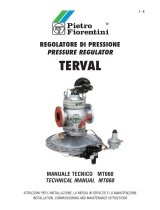 PIETRO FIORENTINI Terval/A Manuale del proprietario
PIETRO FIORENTINI Terval/A Manuale del proprietario
-
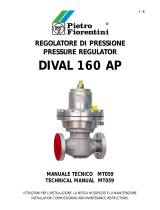 PIETRO FIORENTINI Dival 160 AP Manuale del proprietario
PIETRO FIORENTINI Dival 160 AP Manuale del proprietario
-
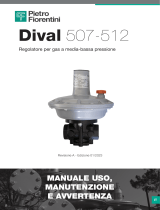 PIETRO FIORENTINI Dival 507-512 Manuale del proprietario
PIETRO FIORENTINI Dival 507-512 Manuale del proprietario
-
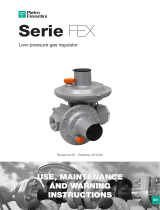 PIETRO FIORENTINI Mod. FEX Manuale del proprietario
PIETRO FIORENTINI Mod. FEX Manuale del proprietario
-
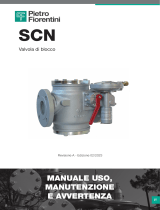 PIETRO FIORENTINI SCN Manuale del proprietario
PIETRO FIORENTINI SCN Manuale del proprietario
-
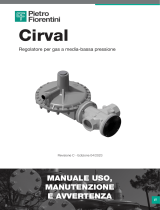 PIETRO FIORENTINI Cirval Manuale del proprietario
PIETRO FIORENTINI Cirval Manuale del proprietario
-
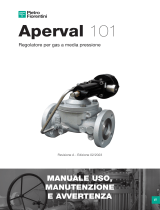 PIETRO FIORENTINI Aperval 101 Manuale del proprietario
PIETRO FIORENTINI Aperval 101 Manuale del proprietario
-
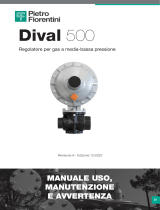 PIETRO FIORENTINI DIVAL 500 Manuale del proprietario
PIETRO FIORENTINI DIVAL 500 Manuale del proprietario
-
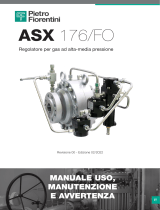 PIETRO FIORENTINI ASX 176/FO Manuale del proprietario
PIETRO FIORENTINI ASX 176/FO Manuale del proprietario




























































